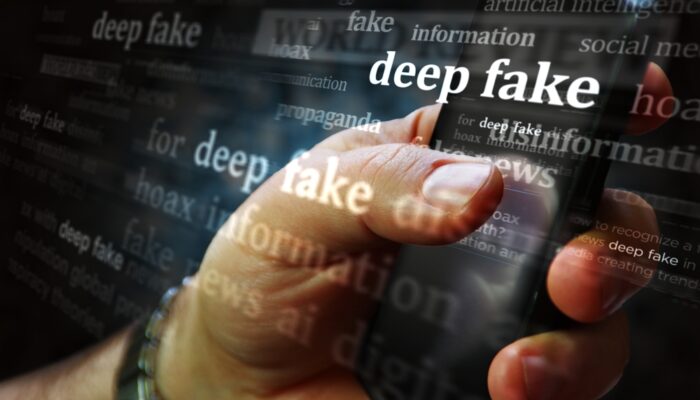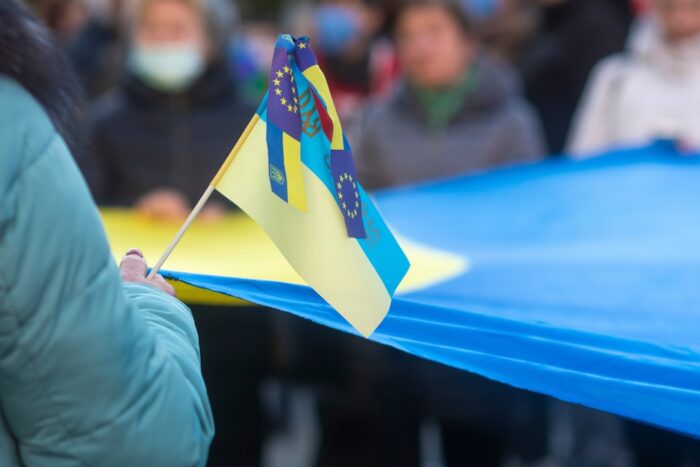The Progressive Post
The Day After: the EU’s Strategic Compass and the protection of Europe

The EU has spent the best part of 20 months working on its ‘Strategic Compass’ for security and defence, yet the war in Ukraine and the threat environment around Europe pose serious questions. If the Compass is to move from just another EU document to credible action, EU member states need to step up their investments in and commitment to European security and defence.
The tragic events unfolding in Ukraine appear otherworldly compared to the seemingly bureaucratic exercise behind the EU’s Strategic Compass. It may be asked: what is another EU strategy document in the face of Putin’s tanks? The pen, in this case, may not be mightier than the sword. We know not how the war will unfold or end, and things may deteriorate for Ukraine and Europe in the coming days. What we do know so far is that the EU, with NATO and partners, has worked at breakneck speed to support Ukrainians in their hour of need while shoring up its own defences.
Indeed, massive sanctions on Russia are designed, in the words of President Von der Leyen, to “cripple Putin’s ability to finance his war machine“. The Union has also taken measures to block its airspace use to Russian aircraft, supply arms to Ukraine’s army, close Russian propaganda outlets and lower Europe’s energy dependence on Russia. Even Germany has seemingly taken an about-turn on defence spending and arms exports.
Delay the Strategic Compass?
However, despite such steps, should Russia’s war on Ukraine serve as a reason to delay the EU’s Strategic Compass? On the face of it, this may seem prudent given the intensity of the war in Ukraine and the fact that there are only three weeks until the official adoption of the Compass is planned. But consider the arguments against delay. First, what should be delayed? The content of the document or the deliverables? If we take the view that the strategic landscape is presently too dynamic, and considering that this situation is unlikely to change for some time, then the Union will never publish the Compass. Furthermore, based on this logic, it would seem reasonable to delay NATO’s Strategic Concept too, but neither the EU nor NATO should hand Putin this small victory.
In any case, the Compass is part strategy, part action plan. The deliverables embedded in the Strategic Compass are the most important aspect of the document and there is a strong case not to delay action at the present time. Action is needed now and not later. If anything, the Compass’ 2030 horizon should be shortened to 2025, and the deliverables brought forward to this year already. The range of deliverables, from cyber-defence and counter hybrid threat tools to investment in military capabilities, is already foreseen in the Compass.
Second, calling for a delay in the Compass assumes that the current version of the text is not up to the challenge of the war in Ukraine. Of course, there will now inevitably be greater steps to strengthen the language on EU-NATO cooperation and the need to adapt capacity-building measures for strategic competition against Russia. However, the present draft is already different to the first version presented to member states on 15 November 2021. Russia’s actions in the lead up to its invasion were already integrated into the Compass work, and the EU Threat Analysis presented in November 2021 already painted a world of more conflict and strategic competition.
What has really changed?
The whole justification for an EU Strategic Compass back in June 2020 was to provide greater clarity for how the EU should undertake crisis management and capacity building, as well as to ensure the protection of Europe. On this basis, the EU’s intelligence services had already made clear that the EU’s neighbourhood and overall position in the world would, without robust and decisive action, be significantly undermined over the next decade to 2030. They have unfortunately been proven right ahead of 2030.
Based on this assumption, the EU’s member states and bodies spent nine months engaged in a so-called dialogue phase, with over 50 workshops and 25 ‘food for thought’ papers. During this period, it became clear that the Union should not only focus on crisis management, but also address the broader resilience of the Union in areas such as cyber, outer space and maritime security, as well as set military capability objectives and stimulate defence innovation.
Yet these discussions did not occur in a strategic vacuum. The haphazard withdrawal from Afghanistan highlighted both the distance Europeans have to go to be capable of undertaking evacuation missions alone, and the fact that European governments were unprepared for the US’ desire to abandon ‘forever wars’ and jettison the state-building concept with it. Although the Sahel cannot entirely be compared to Afghanistan, events in Mali and elsewhere tested further the basic assumptions of EU security and defence policy as they had been defined since the turn of the millennium.
The seeming lurch away from the crisis management paradigm became more apparent following the events in Belarus and the instrumentalisation of irregular migration. The ‘AUKUS’ affair can also be interpreted as a not-so-subtle political message from Washington for Europeans to focus mainly on European security rather than the Indo-Pacific. Russia’s war on Ukraine, while fundamentally altering European security, only emphasises the need for the EU to work with NATO to enhance European security and deterrence.
How to maintain direction?
The Strategic Compass should be adopted by the European Council on 24-25 March, but this seems like an eternity away given the fast pace of events in Ukraine. The Compass should not be delayed, but there are changes that can be made in these final stages. First, the Compass should continue to underline the urgent need for military capability development and basic strategic enablers to allow for the evacuation and protection of European civilians. The Compass should continue to recognise that the EU needs to re-tool its civilian and military missions and operations for an era of strategic competition. Using the European Peace Facility to provide Ukraine with lethal equipment and enablers, is an obvious example, but so too must the Union improve its ability to provide cyber and counter hybrid capacities to partners and member states in need.
Second, the Compass will no doubt focus its efforts on the threat posed by Russia, but the EU needs a broader perspective – it cannot neglect the Middle East and Africa, where Russia is also present. The more the war in Ukraine drags on, the more likely ripple effects will emerge. This includes food insecurity in the Middle East because of grain and wheat shortages from Ukraine and Russia. The Kremlin-sponsored Wagner Group may also intensify its actions in the Sahel as a response to the war. The Compass needs to clearly articulate EU responses to these and other security challenges.
Third, the Compass is right to stress the importance of the maritime, cyber, space and air domains. Prolonged war in Ukraine will mean that the EU needs to protect its key infrastructure and supply lines of communication, not least to support Ukraine with aid and munitions. Here, there is also a golden opportunity for NATO and the EU to take their joint work on military mobility forward. Given that the EU is supporting the delivery of military equipment to Ukraine, and NATO is bolstering defence along the Eastern flank, the idea to support permanent logistics facilities should be put on the table. Given Russia’s proven anti-satellite weapons, ensuring the security of the EU’s space assets is also key.
Finally, although the Compass has thus far shied away from focusing on the Union’s mutual assistance and solidarity clauses, the EU’s response to Russia’s barbaric war on Ukraine gives one a better idea of how the Union could act in case any EU Member State invokes Articles 42.7 or 222 of the EU Treaties in case of armed aggression. While NATO’s Article 5 is sacrosanct for NATO/EU states, and fully acknowledging the Union’s capability vulnerabilities, the war on Ukraine offers the EU a chance to assess what response tools it is missing in times of acute crisis and conflict.
Counterintuitively, the Strategic Compass should send an important message to EU member states and civil society. While the EU has, in the space of a weekend, broken a number of taboos on the provision of military equipment, it has done so under the umbrella of American military might. While the war in Ukraine may further stress the importance of the EU’s strategic sovereignty in defence, the Compass needs to underline all of the major gaps and frailties the Union still suffers in security and defence. This is a necessary admission, especially as we do not yet know how the war in Ukraine may escalate or end.
The views expressed in this publication do not necessarily reflect the views of the European Union or the EU Institute for Security Studies
An updated analysis on this topic by the same author is available on the Winter/Spring issue of the Progressive Post.
Photo credits: Seneline/Shutterstock




